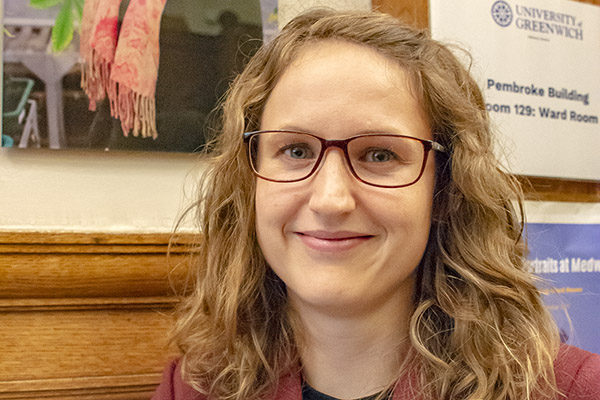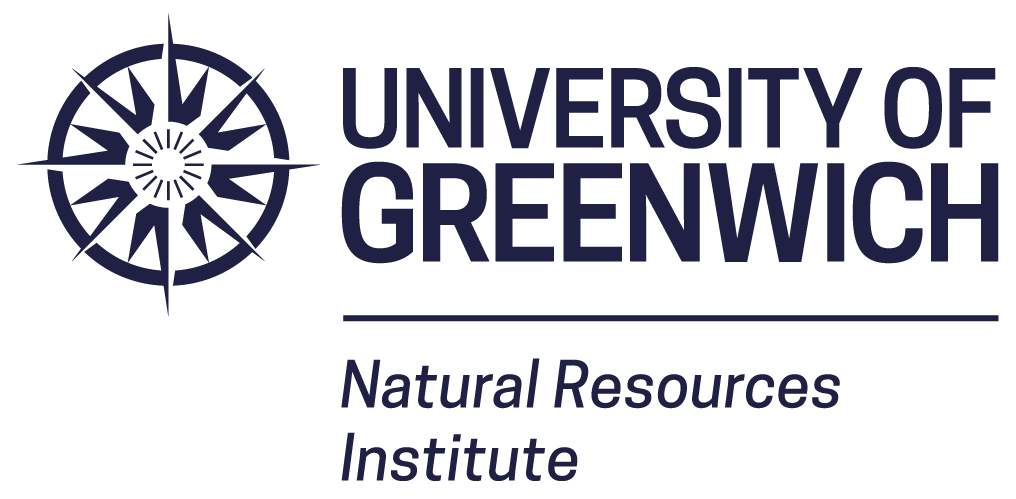Dr Frances Hawkes

Agriculture, Health and Environment Department
Natural Resources Institute, Faculty of Engineering & Science+44 (0)1634 88 3132
Dr Frances Hawkes completed her PhD (2009-2013) at the University of Greenwich, where she was supervised by Professors Gabriella Gibson and Steve Torr (Liverpool School of Tropical Medicine). Her PhD research focused on examining the endogenous circadian rhythms and exogenous sensory cues used by mosquitoes to successfully locate human hosts. This research used cutting edge 3D tracking to follow mosquitoes flying in low light intensities, the results of which allowed Dr Hawkes to develop a prototype trap for outdoor biting Anopheles gambiae, which she successfully tested in Burkina Faso, West Africa, and is now leading a University funded project to develop this technology. In 2012, Dr Hawkes was invited to present this research to MPs at the House of Commons as part of 'Science Engineering and Technology for Britain', a showcase of early-career research excellence and future scientific and technical leaders, supported by the Society of Biology.
She has since continued her work at the Natural Resources Institute, where she has developed novel video assaying techniques for observation of nocturnally ovipositing insects and works in collaboration with Public Health England to monitor for the presence of invasive mosquito species in south-east England. She has also worked with the London School of Hygiene and Tropical Medicine on a 6 month placement in Malaysian Borneo. This involved vector incrimination work to identify the monkey-to-human bridge vectors of the simian malaria parasite Plasmodium knowlesi.
Dr Hawkes was presented with the University of Greenwich's first ever 'Student of the Year' Award in 2012 for her numerous outreach activities and outstanding academic performance.
In 2015, Dr Hawkes' research on a new trap for malaria mosquitoes in Africa was the subject of a BBC documentary called "Our World: Living with malaria", which was filmed on location at NRI's laboratories and in Burkina Faso with collaborators from the Institut de Recherche en Sciences de la Sante (IRSS).
- Improving our knowledge of insect sensory physiology, neurobiology and behaviour to increase our capacity to manage vector-borne diseases of humans and livestock, chiefly focusing on malarial mosquitoes in sub-Saharan Africa.
- Identifying the sensory cues that disease vectors use to find hosts and oviposition sites, and applying this knowledge to improve monitoring and control of disease transmission.
- Exploring emerging vector-host relationships, particularly in the role of Leucosphyrus mosquitoes as bridge vectors of the zoonotic simian malaria parasite Plasmodium knowlesi from long- and pig-tailed macaques to humans in Southeast Asia.
- Ecology of disease vectors in the face of environmental change and anthropogenic intervention, including behavioural adaptations such as modified host choices and geographical range, with a focus on monitoring invasive Culex modestus, a potential UK vector of West Nile Virus.
Improved Simulium capture for onchocerciasis elimination surveillance (PI)
Bill & Melinda Gates Foundation (Nov 2021-April 2023, US$370k)
Partners: Sightsavers International, Osun State University Nigeria, International Institute of Tropical Agriculture Benin
Infrared & AI to diagnose and quantify Onchocerca volvulus in blackflies (Co-I)
Bill & Melinda Gates Foundation (Nov 2021-Nov 2024, US$2.6 million)
Partners: University of Glasgow, Institute de Recherche en Sciences de la Santé Burkina Faso, Ifakara Health Institute Tanzania, Sightsavers International, Osun State University Nigeria, International Institute of Tropical Agriculture Benin
Experiments to compare trapping efficacy of novel human decoy traps with existing trapping methods for sandflies and blackflies
BBSRC GCRF Networks in Vector Borne Disease Research: Gnatwork Community Call (Dec 2019-Dec 2020, £45k)
Partners: International Centre for Diarrhoeal Disease Research–Bangladesh, International Institute of Tropical Agriculture Benin & Cameroon, University of Dschang, Cameroon
Taking the bite out of wetlands: Managing mosquitoes and the socio-ecological value of wetlands for wellbeing
NERC Valuing Nature: Health & Wellbeing (Aug 2016-Jul 2020, £1.3 million)
Partners: Public Health England, Forest Research, University of Bristol, University of Brighton, Cranfield University
Human Decoy Trap; operational and social acceptability of novel tool to improve surveillance and control of mosquitoes and other disease vectors
MRC GCRF Global Infections Foundation Award (Feb 2017-May 2019, £600k)
Partners: Institute de Recherche en Sciences de la Santé, Burkina Faso, International Institute of Tropical Agriculture Benin & Cameroon, Biogents GmbH, Germany, KEMRI Kenya Medical Research Institute, Kenya
The dengue vector Aedes aegypti: Microbiota and the chemical ecology of oviposition sites
MRC UK-Brazil Neglected Tropical Diseases Partnership (Feb 2016-July 2019, £400k)
Partner: Fundação Oswaldo Cruz (FIOCRUZ), Brazil
MOSMOS: Mosquito Outdoor Sampling for Malaria Outdoor Surveillance
University of Greenwich Intramural Research & Enterprise Grant (Aug 2014-Jul 2017, 3 awards totalling ~£100k)
Partner: Institute de Recherche en Sciences de la Santé, Burkina Faso, Biogents GmbH, Germany
Bionomics of zoonotic malaria vectors
RSTMH Small Grants Fund (Jan 2015-Dec 2015, £5k)
Partner: Universiti Malaysia Sabah
Anopheles balabacensis: vector ecology
Malaysian Ministry of Education Fundamental Research Grant Scheme (Aug 2015-Jul 2016, £25k)
Parnter: Universiti Malaysia Sabah
- Akoton R, Sawadogo SP, Tossou E, Nikiema AS, Tchigossou G, Sovegnon PM, Djogbenou L, Zeukeng F, Hawkes FM, Dabire RK, Djouaka R, Gibson G (2024) Using artificial odours to optimize attractiveness of Host Decoy Traps to malaria vectors. Journal of Medical Entomology, tjae010.
- Carnaghi M, Mandelli F, Feugère L, Joiner J, Young S, Belmain SR, Hopkins RJ, Hawkes FM (2024) Visual and thermal stimuli modulate mosquito-host contact with implications for improving malaria vector control tools. iScience, 27(1):108578.
- Hardy H, Harte SJ, Hopkins RJ, Mnyone L, Hawkes FM (2023) The influence of manure-based organic fertilisers on the oviposition behaviour of Anopheles arabiensis. Acta Tropica, 244:106954.
- David MR, Maciel-de-Freitas R, Peterson MT, Bray D, Hawkes FM, Mandela Fernández-Grandon G, Young S, Gibson G, Hopkins RJ (2023) Aedes aegypti oviposition-sites choice under semi-field conditions. Medical & Veterinary Entomology.
- Hawkes FM, Zeil J, Gibson G (2022) Vision in Mosquitoes, Chapter 19 in Ignell R, et al., eds. (2022) Sensory Ecology of Disease Vectors, Wageningen Academic Publishers, pp. 511-533. https://doi.org/10.3920/978-90-8686-932-9
- Hardy H, Hopkins RJ, Mnyone L, Hawkes FM (2022) Manure and mosquitoes: life history traits of two malaria vector species enhanced by larval exposure to cow dung, whilst chicken dung has a strong negative effect. Parasites & Vectors, 15(472). https://doi.org/10.1186/s13071-022-05601-3
- Hien AS, Sangaré I, Ouattara ELP, Sawadogo SP, Soma DD, Hamidou M, Diabaté A, Bonnet E, Ridde V, Fournet F, Hawkes FM, Kaupra C, Bouyer J, Abd-Alla AMM, Dabiré RK (2022) Chikungunya (Togaviridae) and dengue 2 (Flaviviridae) viruses detected from Aedes aegypti mosquitoes in Burkina Faso by qRT-PCR technique: Preliminary results and perspective for molecular characterization of arbovirus circulation in vector populations. Frontiers in Tropical Diseases, 3:920224. doi: 10.3389/fitd.2022.920224
- Zembere K, Chirombo J, Nasoni P, McDermott D, Divala L, Hawkes FM, Jones CM (2022) The human-baited host decoy trap (HDT) is an efficient sampling device for exophagic malaria mosquitoes within irrigated lands in southern Malawi. Scientific Reports, 12, 3428. https://doi.org/10.1038/s41598-022-07422-x.
- Hawkes, FM, Hopkins, RJ (2021) ‘The Mosquito: An Introduction’, in Hall, M & Tamir, D (eds), Mosquitopia: The Place of Pests in a Healthy World. Routledge, pp. 16-31, DOI https://doi.org/10.4324/9781003056034.
- Talom, BAD, Enyong, P, Cheke, RA, Djouaka, R, Hawkes, FM (2021) Capture of high numbers of Simulium vectors can be achieved with Host Decoy Traps to support data acquisition in the onchocerciasis elimination endgame. Acta Tropica, 221: 106020.
- Carnaghi, M, Belmain, SR, Hopkins, RJ, Hawkes, FM (2021) Multimodal synergisms in host stimuli drive landing response in malaria mosquitoes. Scientific Reports, 11, 7379. https://doi.org/10.1038/s41598-021-86772-4.
- López-Peña, D, Hawkes, FM, Gibson, GI, Johnston, C, Vaux, AGC, Lis-Cantín, Á, Medlock, JM, Cheke, RA (2021) Mosquito Magnet® traps as a potential means of monitoring blackflies of medical and veterinary importance. Medical and Veterinary Entomology. https://doi.org/10.1111/mve.12530.
- Sawadogo, SP, Nikièma, AS, Coulibal, S, Koala, L, Niang, A, Bougouma, C, Bougma, RW, Gnankine, O, Hawkes, FM, Boakye, D, Dabiré, RK (2021) Community implementation of human landing and non-human landing collection methods for Wucheria bancrofti vectors. Journal of Parasitology and Vector Biology, 13(1), 41-50. https://doi.org/10.5897/JPVB2020.0407.
- Hawkes, FM, Medlock, JM, Vaux, AGC, Cheke, RA, Gibson G (2020) Wetland Mosquito Survey Handbook: Assessing suitability of British wetlands for mosquitoes. Natural Resources Institute, Chatham, UK, http://www.wetlandlife.org/images/images/Project_outputs/NRI-PHE-UoG_Wetland_Mosquito_Survey_Handbook_v1-indexed.pdf.
- Tang, JY, Kosgei, J, Ochomo, E, Ndenga, BA, Ghiaseddin, R, Lobo, NF, Hawkes, FM, O’Tousa, JE (2020) Impact of visual features on capture of Aedes aegypti with host decoy traps (HDT). Medical & Veterinary Entomology, https://doi.org/10.1111/mve.12482.
- Davidson, J.R., Baskin, R.N., Hasan, H., Burton, T.A., Wardiman, M., Rahma, N., Saputra, F.R., Aulya, M.N., Wahid, I., Syafruddin, D, Hawkes, F.M., Lobo, N.F. (2020) Characterization of vector communities and biting behavior in South Sulawesi with host decoy traps and human landing catches. Parasites Vectors 13, 329. https://doi.org/10.1186/s13071-020-04205-z.
- Hawkes FM, Manin BO, Cooper A, Daim S, Homathevi R, Jelip J, Husin T, Chua TH (2019) Vector compositions change across forested to deforested ecotones in emerging areas of zoonotic malaria transmission in Malaysia. Scientific Reports, 9:13312 (https://doi.org/10.1038/s41598-019-49842-2).
- Abong'o B, Yu X, Donnelly MJ, Geier M, Gibson G, Gimnig J, ter Kuile F, Lobo NF, Ochomo E, Munga S, Ombok M, Samuels A, Torr SJ and Hawkes FM (2018) Host Decoy Trap (HDT) with cattle odour is highly effective for collection of exophagic malaria vectors. Parasites and Vectors, 11:533 (https://doi.org/10.1186/s13071-018-3099-7)
- Cheke, RA, Hawkes, FM, Gibson, GI & Acott, TG (2018) Mosquito magnet traps for monitoring host-seeking Simulium. Abstract no 13, page 17 in J. B. Davies (ed.) Proc. 8th. International Simuliidae Symposium, Birmingham, UK, 21-22 June 2018. The Simuliid Bulletin 50 Supplement: https://drive.google.com/drive/folders/0Bz0txvVk5I3Kb3A5X254WVA0bEE.
- Hawkes FM, Dabiré RK, Sawadogo SP, Torr SJ, Gibson G (2017) Exploiting Anopheles responses to thermal, odour and visual stimuli to improve surveillance and control of malaria. Scientific Reports, 7:17283 (http://rdcu.be/A0bE).
- Hawkes F, Manin BO, Ng SH, Torr SJ, Drakeley C, Chua TH, Ferguson HM (2017) Evaluation of electric nets as a means to sample mosquito vectors host-seeking on humans and primates. Parasites and Vectors, 10(338).
- Hawkes, FM and Gibson, G (2016) Seeing is believing: the nocturnal mosquito Anopheles coluzzii responds to visual host-cues when odour indicates a host is nearby. Parasites and Vectors, 9(320).
- Medlock, JM, Vaux, AGC, Gibson, G, Hawkes, FM, Cheke, RA (2014) Potential vector for West Nile virus prevalent in Kent. Veterinary Record, 175(11), 284-285.
- Whitehorn, LJ, Hawkes, FM, Dublon, IAN, (2013) Superplot3D: an open source GUI tool for 3d trajectory visualisation and elementary processing. Source Code for Biology and Medicine, 8(19).
- Hawkes, FM & Acott, TG (2013) People, environment and place: the function and significance of human hybrid relationships at an allotment in South East England. Local Environment, 18:10, 1117-1133, DOI: 10.1080/13549839.2013.787590.
- Hawkes, F, Young, S and Gibson, G (2012) Modification of spontaneous activity patterns in the malaria vector Anopheles gambiae when presented with host-associated stimuli. Physiological Entomology, 37(3), pp. 233-240.
Research teaching outreach
- Member of the Asia-Pacific Malaria Elimination Network’s Vector Control Working Group
- Fellow of the Royal Entomological Society
- Member of the Royal Society of Tropical Medicine & Hygiene
- 2020 Smart Pest Control programme awarded Queen’s Anniversary Prize for Further and Higher Education
- Editorial Board Member, Scientific Reports, 2018-2021
- Member of Roll Back Malaria’s Vector Control Working Group
- Technical Steering Committee member of DISSECT: Developing innovative scalable solutions to entomology gaps and cross-border transmission of onchocerciasis (2022-2024).

